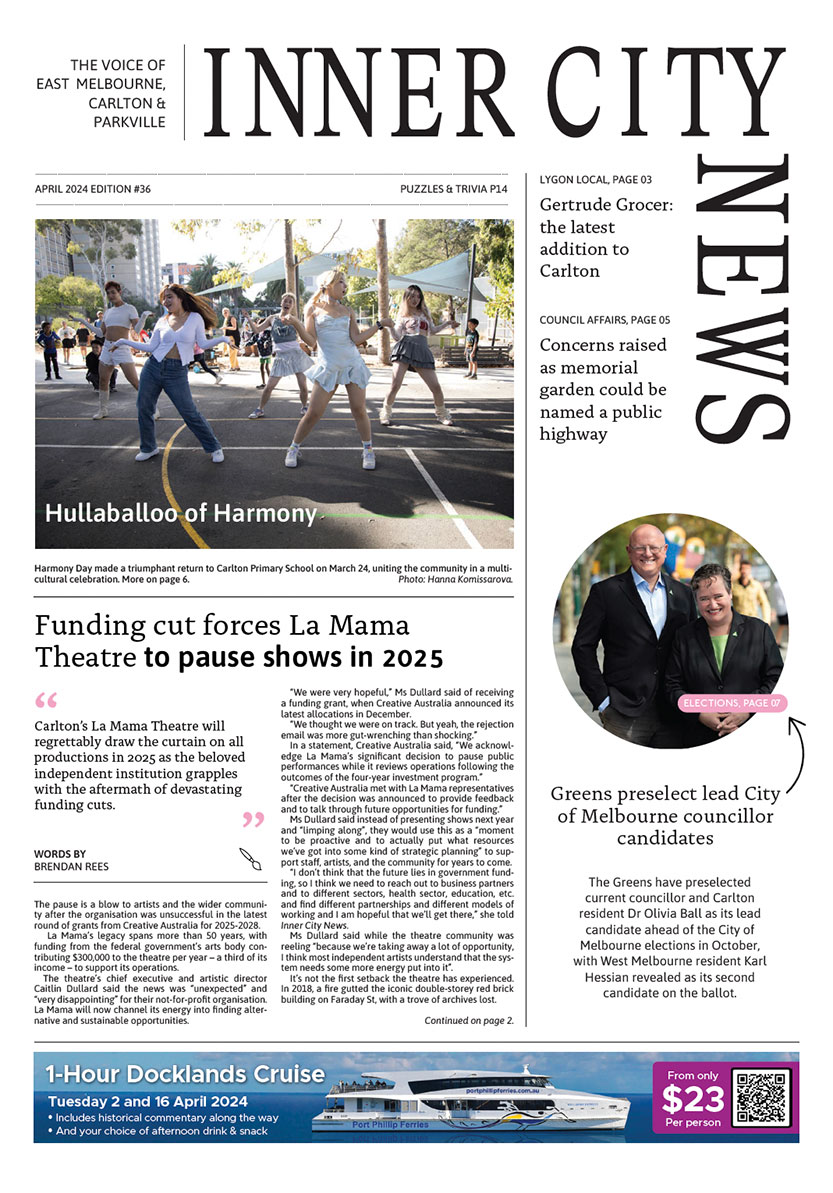Melbourne’s original trams
Before electric trams were introduced in Melbourne in the early 20th century, the city had an extensive system of cable trams.
Operating from 1885 until 1940, Melbourne’s cable tram system was the fourth largest in the world, with about 75 kilometres of track, 17 inner-suburban routes, and 600 cable car and trailer sets.
By 1916, these trams were carrying more than 100 million passengers a year to and from the inner and middle suburbs, at speeds averaging 15 kilometres an hour, including stops.
Cable trams depended for their motive power on a cable in a slot between the rails that was kept moving by a steam engine in an engine house along the route. In the first car (the dummy) the driver (the gripman) stood in the middle working the levers that gripped the cable in the slot to make the tram move. To stop the tram, he simply let go of the cable and applied the brake. Passengers could ride in the dummy, which apart from the roof was quite open. The second car, which was enclosed, was only a trailer pulled along by the dummy.
At some corners the cable ran around a big pulley, and at others one cable had to be dropped and another picked up once the tram was around the corner. In either case the cable had to be let go. Once the tram was released from the cable, it had to rely on its momentum to keep going around the corner until it could pick up the cable again. This was all very well as long as a pedestrian, horse or car did not wander across the tracks causing the gripman to use the brakes. Then there was only one way to get the tram around the corner – the passengers had to get out and push.
To avoid this, the gripman might get up as much speed and momentum as possible and hurtle around the bend. To avoid people being thrown off, he would call out, “Mind the curve”. It did not always work.
In July 1924 The Age reported that Mr Charles Jonah, 76, of Union Place, Carlton, failed to heed the gripman’s warning and as the tram turned the corner from Rathdowne St into Elgin St, he fell off. He was admitted to hospital but was not seriously hurt and after treatment was discharged.
By 1901 Melbourne had cable trams running to all the inner northern suburbs – North Melbourne, Brunswick, Carlton, Fitzroy, Clifton Hill, Northcote – as well as to Richmond, Toorak, Prahran and St Kilda. At various points along these routes there were engine houses with large steam engines that powered the moving cables. Two engine house buildings are still in existence and can be seen on the corner of Nicholson and Gertrude streets in Fitzroy, and at the northern end of Rathdowne St in North Carlton.
By the 1920s, Melbourne’s expanding suburbs meant that the tram network needed to be extended. But building new cable tram routes would be expensive, and electric trams provided a cheaper option. The last cable tram in Melbourne made its final run in October 1940, from Bourke St via Nicholson St to Northcote •
Caption: A cable tram in Lygon St, Carlton, in the 1930s.

Carlton language school championed by Ukrainian refugee




 Download the Latest Edition
Download the Latest Edition